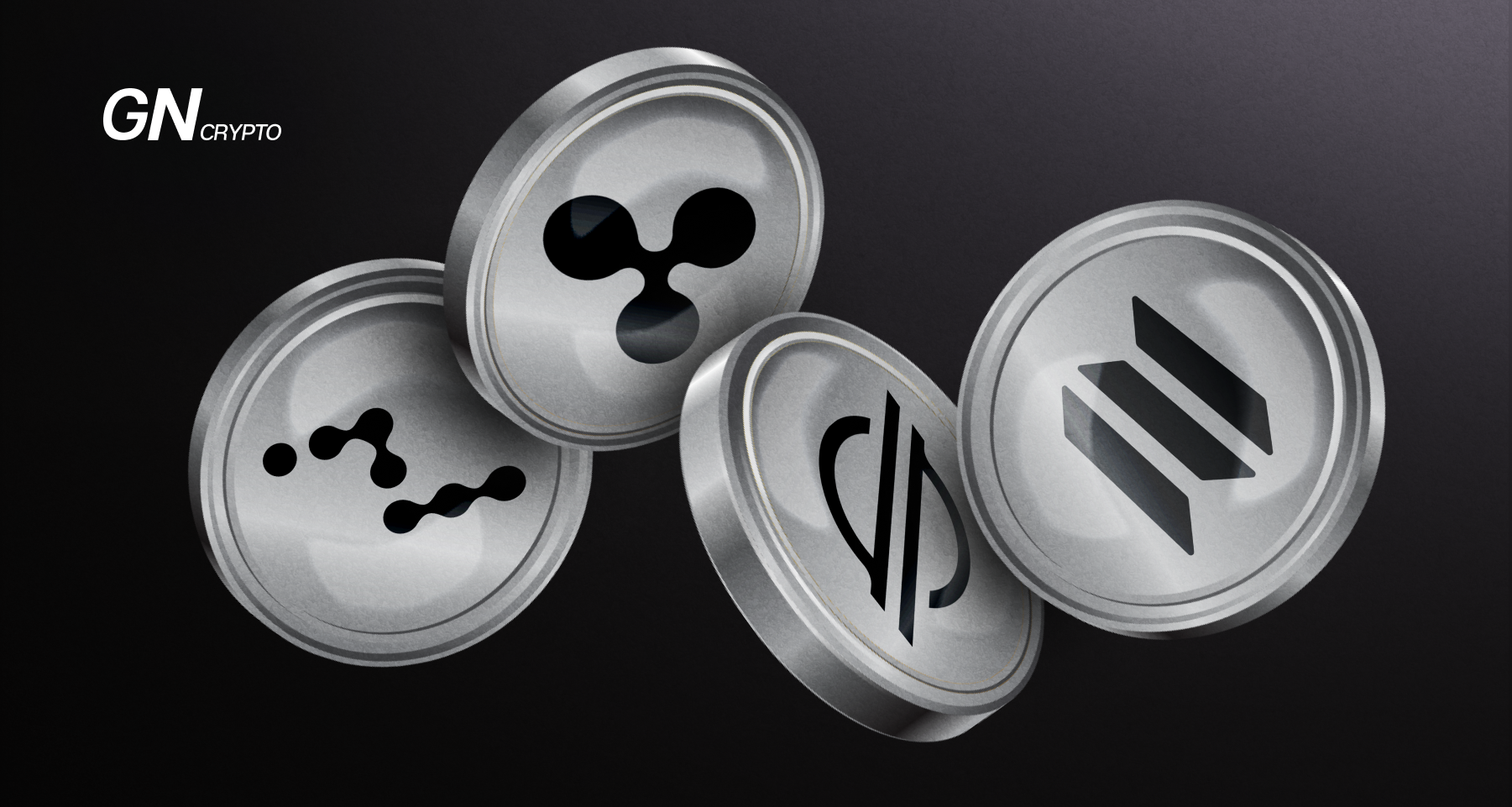Daily Spending with Crypto: Coins with Low Fees

Cryptocurrencies are quickly becoming part of our daily routines. Today, we can use them to pay for coffee, streaming services, or even tickets to a favorite game. However, not all cryptocurrencies work well for quick and affordable everyday payments.
On this page
As crypto adoption grows, so do questions about the best coins for daily payments—especially without paying steep fees. In this piece, we’ll explore low-fee cryptocurrencies that make microtransactions easy and cost-effective.
Get insights on how to pick the most efficient digital coin for your needs and see which projects currently offer the most favorable conditions for everyday use!
Nano (NANO)
Nano was created with a singular purpose: to enable instant, feeless, and scalable payments—and it’s uniquely focused on this goal.
Unlike other digital currencies, Nano doesn’t employ a traditional blockchain. Instead, each account on the Nano network holds its own “personal blockchain.” Transactions are directly added to the user’s chain when they send NANO.
NANO is ideal for micro-transactions. Source: Х
Nano employs a Directed Acyclic Graph (DAG) system, where each network participant acts as a miner and a validator on their own.
Exploring DAG Technology
DAG, short for Directed Acyclic Graph, is a distinct technology that offers an alternative design for distributed ledgers in various cryptocurrencies.
Imagine a blockchain as a linked chain of blocks; in contrast, DAG is structured more like a web, with each element connecting to multiple others.
Blockchain consolidates transactions into blocks, while in DAG, each transaction is processed individually, referencing one or several previous ones. This non-linear layout allows new transactions to “attach” to existing ones, enabling DAG networks to process far more data in the same time span as traditional blockchains and complete payments almost instantly.
Want to dive deeper into DAG? Our article “What is Directed Acyclic Graph (DAG)?” explains everything.
Built for everyday spending, Nano’s fee-free structure is ideal for small, frequent transactions—think in-game or mobile app purchases.
Trading on Binance, OKX, Kraken, KuCoin, BingX, Gate.io, and HTX at $0.87, Nano’s all-time high of $30.22 came in January 2018.
At the time of writing, Nano has a market cap of $115.7 million, with daily trading volumes around $1.5 million.
Solana (SOL)
Solana (SOL) ranks second on our list, standing out for its incredible transaction speed and scalability, handling close to 50,000 TPS — one of the highest rates in the current crypto landscape.
This level of TPS is considerably higher than its key competitor, Ethereum, which has set a goal of 10,000 TPS.
Check out: Ethereum vs Solana: Choosing the Optimal Blockchain
The Solana fee structure offers users flexibility in handling transaction payments. A set base fee covers the minimal blockchain costs needed to process data, but users can opt for a priority boost by paying an extra fee, speeding up transaction confirmations. Solana also uses a rental system to ensure data retention on the blockchain, with fees based on data size and storage time.
Solana: The Chief Challenger to Ethereum. Source:rejolut.com
Solana’s transaction fees for SOL average around 0.000005 SOL—less than a cent. Though there’s minor variation, costs remain minimal. Even priority transactions with faster processing top out at about 2.5 cents.
This affordability makes SOL an excellent option for gaming payments, crypto-based donations, and digital shopping.
This can be done using APIs, e-commerce plugins, invoices, etc. By the way, you can even make Amazon purchases with Solana gift cards! This feature is available through the crypto payment gateway NOWPayments, integrated within Solana’s ecosystem.
And if we’re talking gift cards, our friends at WhiteEX are always expanding their range of crypto options.
Recommended reading: Charity and Crypto – The Perfect Combination
Stellar (XLM)
Coming in third is Stellar, along with its native token, XLM.
What sets Stellar apart is its ultra-low transaction fees. Unlike blockchains where fees can sometimes cost more than the actual transaction, especially when traffic spikes, Stellar maintains reliably low transfer costs.
This quality makes it popular among individual users and large financial institutions alike.
More details in: An Overview of the Stellar Network and Lumens (XLM)
On Stellar, transaction fees are calculated using a base rate and the number of operations included in the transfer. For each operation, the fee is 100 stroops (equivalent to 0.00001 XLM).
The fee is determined by this formula:
Transaction Fee = (Number of Operations) * (Base Rate)
Consider a transaction with two operations (confirming the sender’s funds and completing the transfer); the cost would be calculated as:
2 operations * 100 stroops per operation = 200 stroops, or 0.00002 XLM.
*Stroop refers to the smallest unit of Stellar’s currency, with 1 XLM equivalent to 100,000 stroops.
Given the current rate of $0.093 per XLM, sending micropayments on the Stellar network is almost cost-free.
Stellar’s transaction confirmation speed is also impressive (testing showed up to 1,100 transactions per second!). This level of efficiency is ideal for gaming, online casinos, and especially international payments, which still can take days—an excellent alternative to the “dinosaurs” that somehow endure.
And yet, how are these “financial relics” still surviving?
XLM: an ideal choice for cross-border transactions. Source: uzmancoin
Stellar’s multi-currency conversion feature makes global transactions smoother, enabling direct XLM-to-crypto exchanges without intermediary swaps.
In developing regions, high remittance fees often come with traditional services. Stellar provides an accessible and cost-efficient alternative, expanding financial reach for millions who need quick, affordable payments.
Additionally, Stellar supports smart contracts, paving the way for more advanced financial products and applications on the network.
Related: Jed McCaleb: From Mt.Gox to Stellar
Ripple (XRP)
Ripple Labs stands out in the market for speedy, affordable transactions. Their native token, XRP, operating on a “lightweight blockchain,” enables funds to move faster and cheaper than through traditional bank systems. The protocol supports over 1,500 transactions per second and scales effectively.
Testing reveals that cross-border transfers on this network take just 2-3 minutes, with transaction fees kept to no more than 0.001% of the total amount.
So why did we place this cryptocurrency a notch below Stellar, despite RippleNet's superior network performance?
The answer lies in the status of Ripple’s key technology, ODL, meant to facilitate fast global transfers but not yet fully operational. The rollout has been held back by a protracted legal struggle with the SEC, stretching on for over two years now. With appeals following one after another, any resolution still feels distant.
Until the court officially decides that XRP is not a security, Ripple Labs will remain limited in its ability to market this pioneering technology to institutional investors and payment networks, restricting the extensive reach the project could achieve.
Further reading: What is Ripple ODL and How Does it Work?
XRP stands ready for fast cross-border payments. Source: Reddit
With that in mind, once this legal marathon, long as the polar night, finally wraps up, XRP could emerge as a promising fiat substitute for international transactions.
Where Can You Put “Economical” Cryptos to Work?
These cryptos aren’t exactly geared toward long-term investing or saving. They’re more straightforward, functional digital assets that are handy to keep in your crypto wallet for regular payments.
Low-cost cryptos hold a unique edge: affordable, easy-to-access transactions.
Key applications for low-fee cryptocurrencies:
- Online Gambling. In gaming and casino platforms, these cryptocurrencies enable players to capture profits efficiently, with minimal fees for account deposits and withdrawals.
- Microtransactions. Low transaction costs make small payments feasible, whether it’s tipping a content creator or buying in-game items. No one would send $0.10 to support an article or video if it came with a $0.50 fee. These tiny contributions are essential for encouraging the everyday use of digital assets.
- DeFi (Decentralized Finance). In DeFi applications, low-fee cryptos are popular for use on decentralized exchanges, reducing transaction costs when network traffic spikes—such as during major events like airdrops.
Transaction fees aren’t the only consideration when picking a cryptocurrency; security, liquidity, and technical aspects of the protocol are just as vital. Projects with rapid transaction processing may rely on centralized systems, which can force an uneasy compromise between privacy and affordability.
Crypto markets shift constantly, so stay informed on the latest projects through our site. But wise investing is always a decision that rests with you.
Read on: How Tron Transaction Fees Work and How to Reduce Them
The content on The Coinomist is for informational purposes only and should not be interpreted as financial advice. While we strive to provide accurate and up-to-date information, we do not guarantee the accuracy, completeness, or reliability of any content. Neither we accept liability for any errors or omissions in the information provided or for any financial losses incurred as a result of relying on this information. Actions based on this content are at your own risk. Always do your own research and consult a professional. See our Terms, Privacy Policy, and Disclaimers for more details.





























